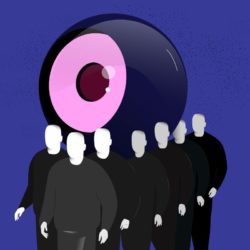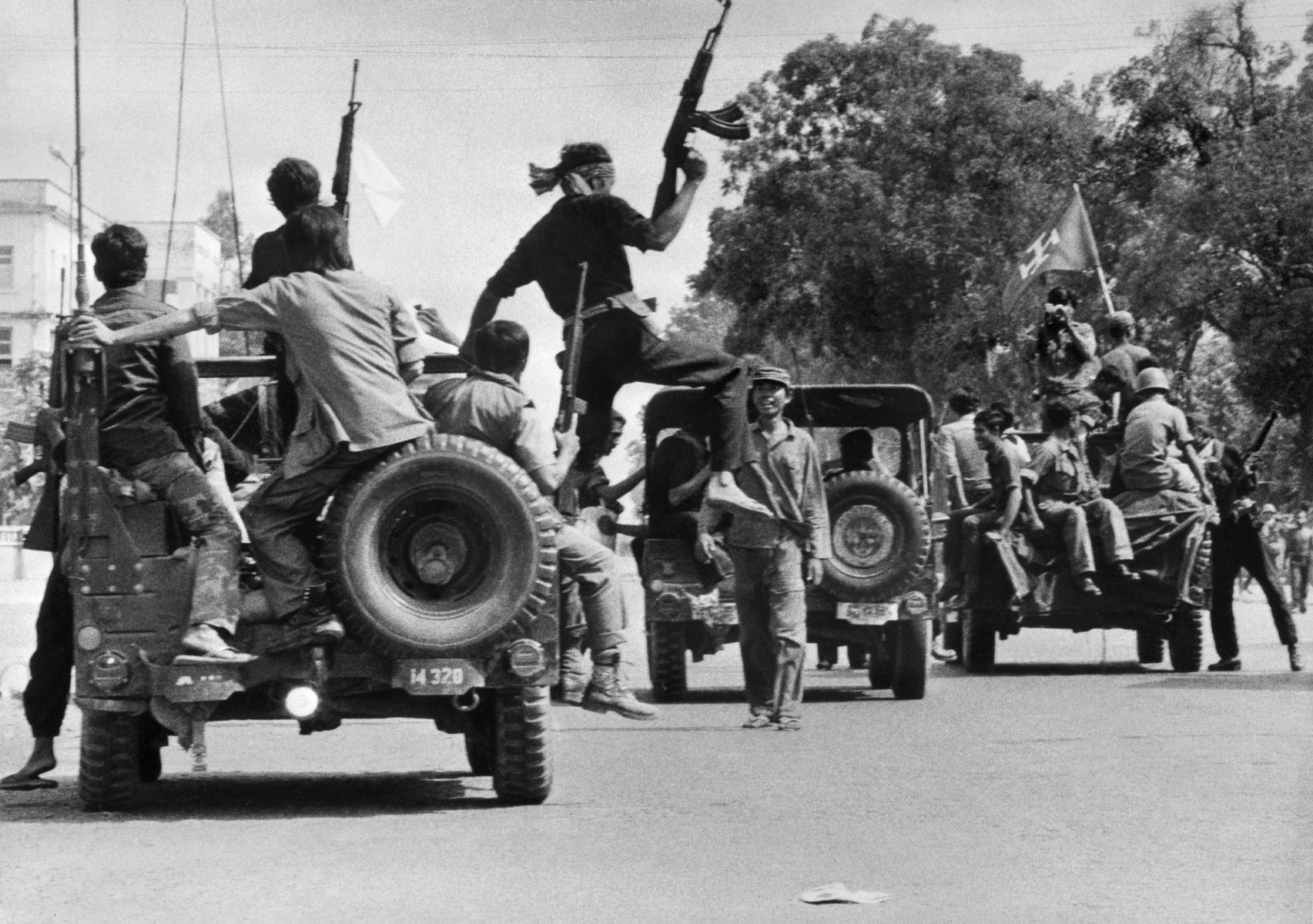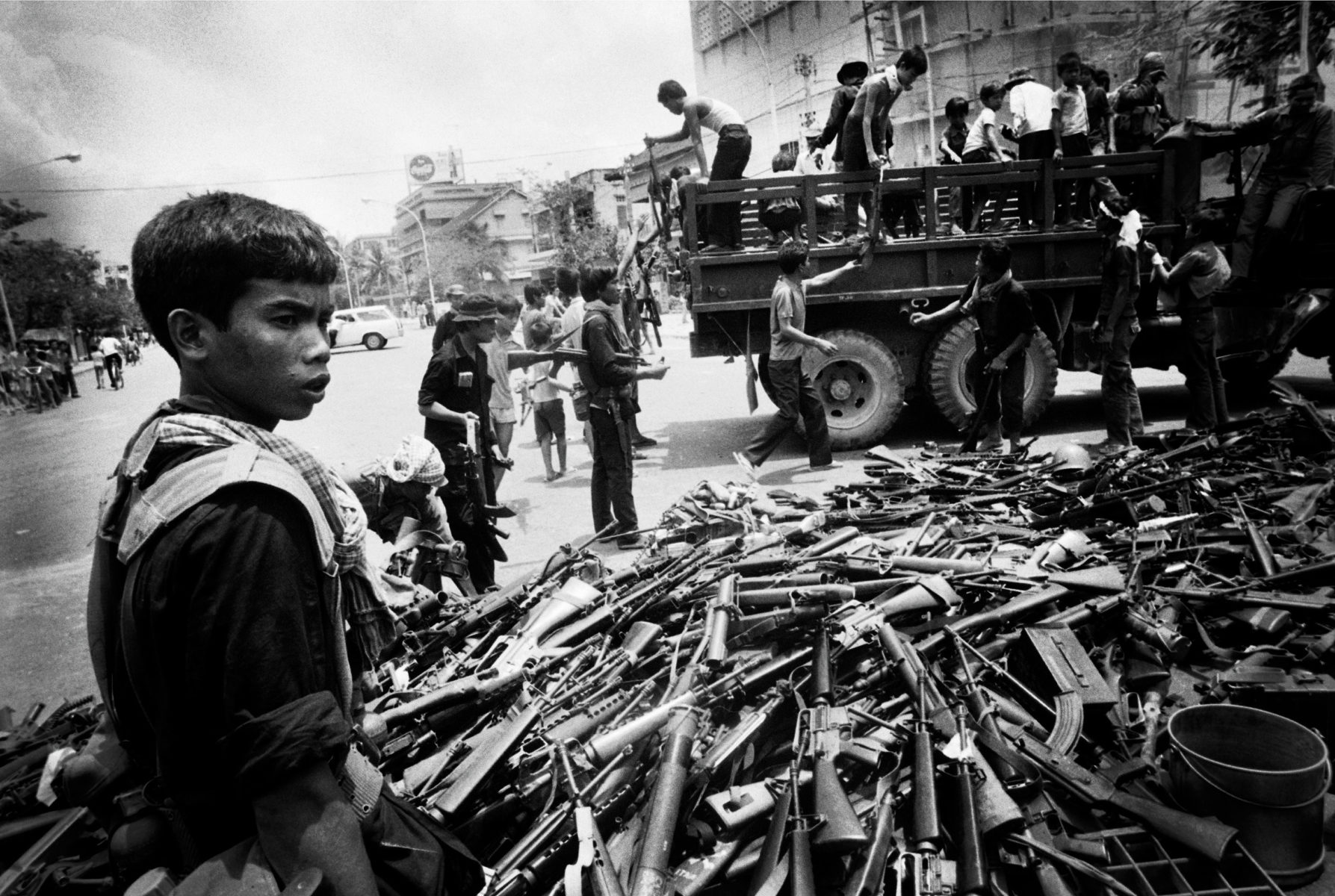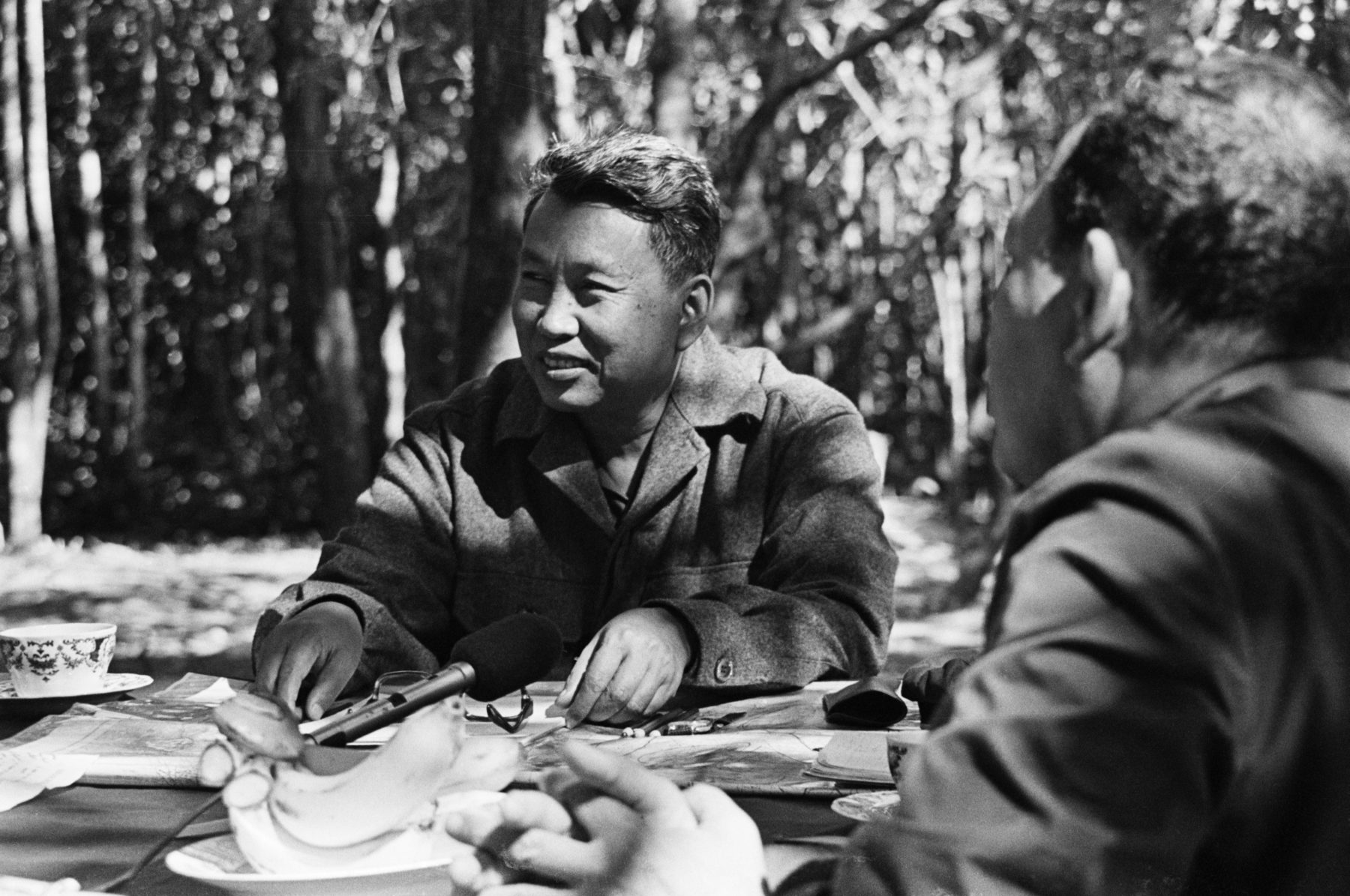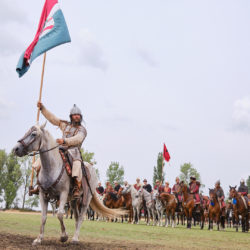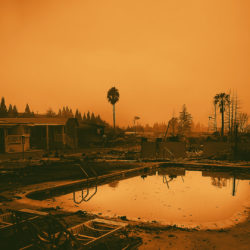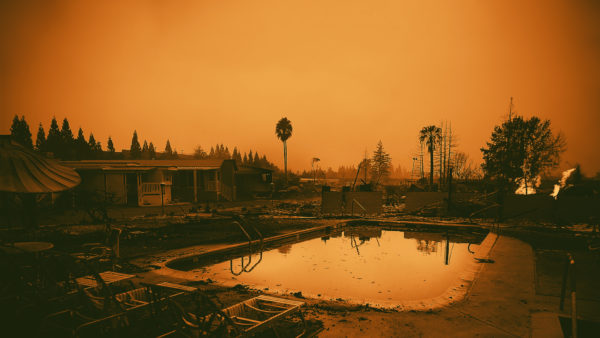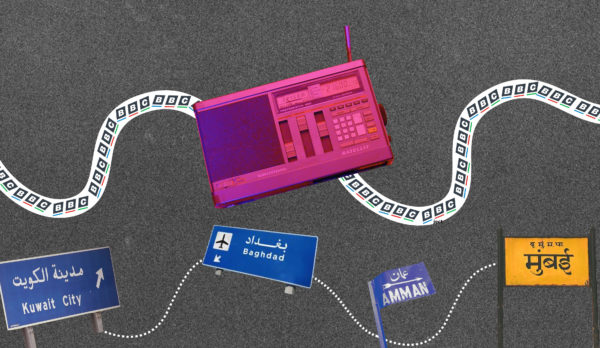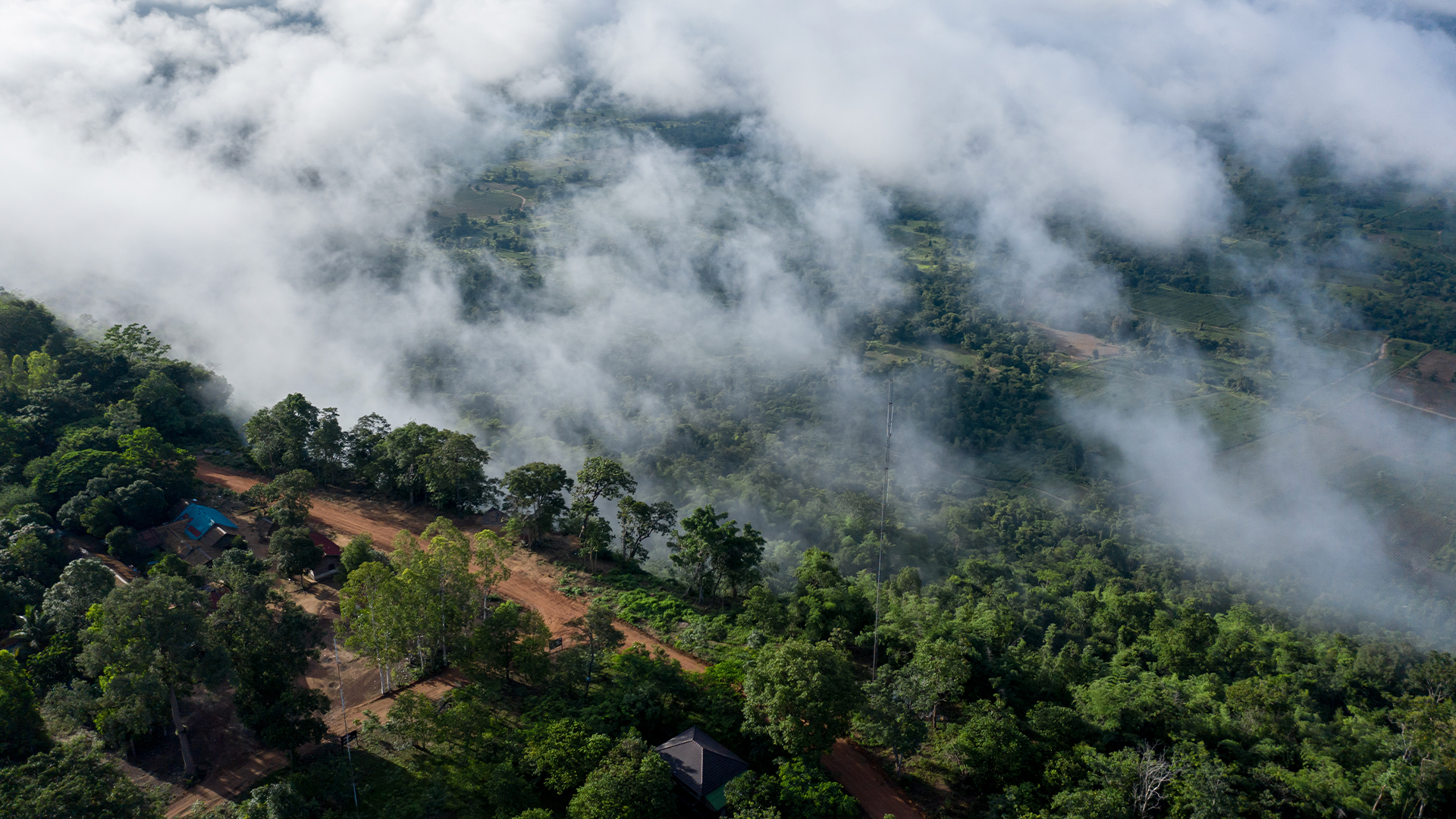
In the Khmer Rouge’s last stronghold, myths from the Cambodian genocide still reign
- By Fiona Kelliher
- Photography by Andy Ball
- feature
Near Cambodia’s border with Thailand, in a two-story home, a group of teenagers watched a black-and-white video projected onto a screen. It was only 8 a.m. on a gray Sunday morning, but the kids, clad in flip-flops and jeans, were rapt with attention.
The video flashed images of the Tuol Sleng Prison in Phnom Penh, where thousands of Cambodians were tortured and killed during the Marxist Khmer Rouge regime of the 1970s. The classroom walls were decorated with photos of figures from the era. A row of filing cabinets held thousands of pages of Khmer Rouge documents from the surrounding district.
The Big Idea: Age of nostalgia
Infatuation with a mythologized history has overtaken communities, cultures, entire regions, sending society and identity into a fun-house mirror of nostalgic reflections. This special issue brings you stories of people finding solace in pasts imagined and grieving for futures foreclosed in a time of existential threats.
Nostalgia has both been harnessed for political ends and become its own political force, electrifying powerful currents of populism, jingoism, and longing for dynastic rule. It also reaches deep into the crevices of human feeling — in kitchen table conversations and on TikTok alike — leading to a thickening of anger, loss, and sadness.
In Anlong Veng, it is widely understood that Vietnamese people — not the Khmer Rouge — were behind the worst violence that devastated Cambodia and that Khmer Rouge war heroes tried to stop them.
When the video ended, the soft-spoken workshop leader Ly Sok Kheang asked the kids: “Do you think Cambodian people could have killed other Cambodians?”
A girl sitting in the back stood up. “No, it’s probably not true,” she said. “I’ve heard that people took on fake identities to kill innocent Cambodian people.” A tall boy in the row behind her agreed: “The Vietnamese faked their identities as Cambodian people. But the journalists all broadcast that Cambodian people killed other Cambodians.”
The journalists had it right in this case. When the Khmer Rouge officially ruled Cambodia from 1975 to 1979, its leaders orchestrated the genocide of roughly a quarter of the country’s population of 7.8 million people. Regime leaders were hyper-focused on exterminating educated people and minorities, leading to mass atrocities that politicians and historians today still struggle to make sense of.
Although the Khmer Rouge movement was considered the “younger brother” of Northern Vietnamese communists and initially received their support, the reality was more complicated. Fearful that Vietnam — a historical enemy — intended to gobble up their land, Khmer Rouge leaders officially broke diplomatic relations with the larger neighbor in 1977 as border disputes escalated.
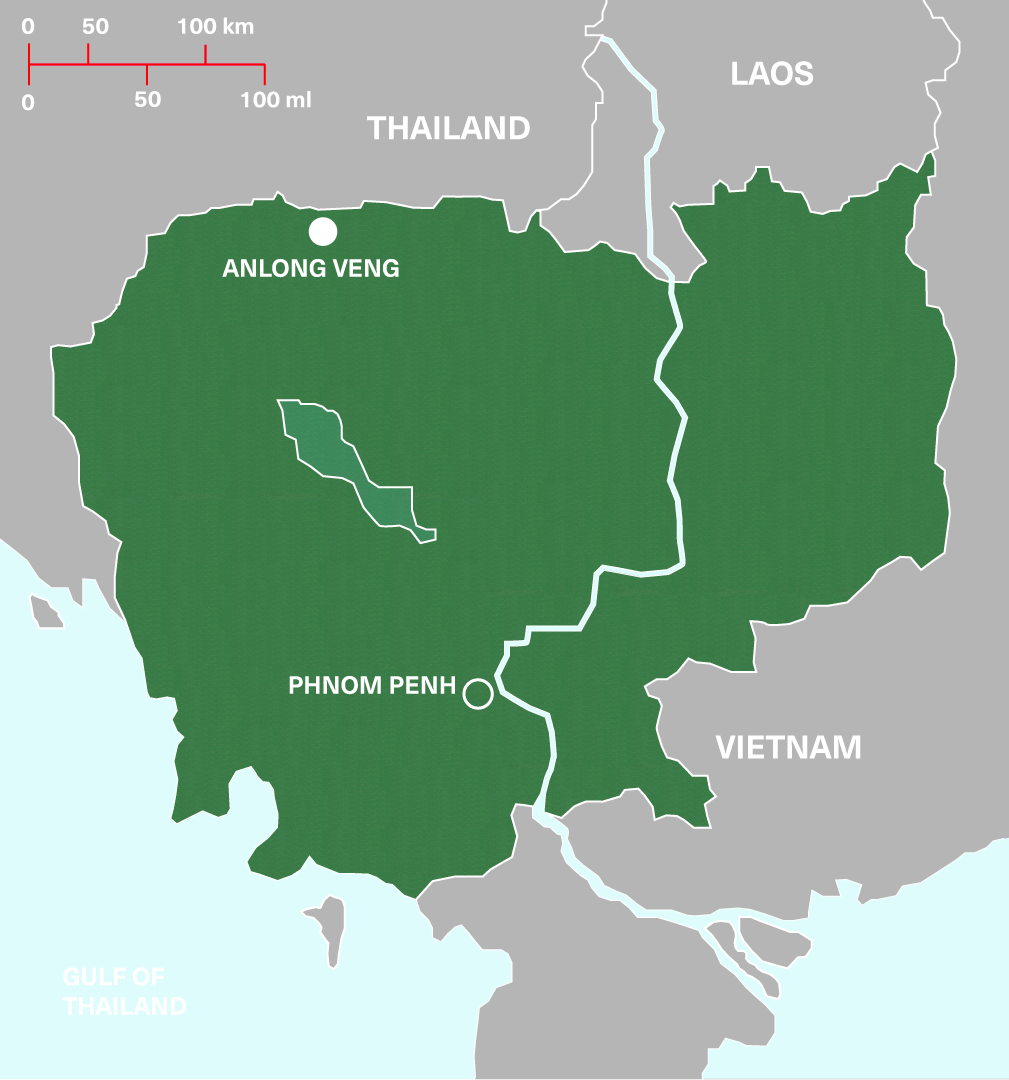
In most of Cambodia, the Khmer Rouge fell in 1979 when Vietnamese troops toppled the regime. The Vietnamese occupied most of the country throughout the 1980s, hailed by some as liberators and others as oppressors. But in this remote, 60,000-person district called Anlong Veng, the Khmer Rouge retained its political power for nearly 20 more years. Today, most families still include former cadres for whom guerilla warfare is a not-so-distant memory. And anti-Vietnamese sentiment, handed down from Khmer Rouge leaders over decades, remains strong.
“It helps to compartmentalize the idea that somehow we screwed up and we did this to ourselves,” said Sophal Ear, a political scientist at the Arizona State University whose family fled the regime when he was a child. “It’s the narrative that permeates anti-Vietnamese sentiment and re-appropriates the whole Khmer Rouge episode of Cambodia as like, ‘No, no, no, this was all Vietnamese-done. We were victims. The genocide was Vietnamese killing Cambodians.’”
Anti-Vietnamese racism is nothing new in Cambodia, where many resent both France, for ceding contested land to Vietnam in 1949, and the Vietnam-installed government that took over Cambodia after the Khmer Rouge. Opposition leaders have long relied on anti-Vietnamese rhetoric for support, even when it has led to violence.
On a national scale, the country has struggled to confront the genocide that occurred under the Khmer Rouge, and formal education about the regime was practically nonexistent for decades. Current Prime Minister Hun Sen, a former Khmer Rouge soldier himself who defected to Vietnam, famously said that Cambodians should “dig a hole and bury the past” and has been accused of interfering with the Khmer Rouge Tribunal.
In Anlong Veng, aging troops aren’t a political party or even a re-emerging insurgency looking to launch a new movement. But their ahistorical telling of the genocide plays into Cambodia’s worst tropes about its old enemy, exacerbating tensions and pushing a confrontation with the country’s own past further out of reach.
But some are trying to provide a counterweight. Ly Sok Kheang works for the Documentation Center of Cambodia (DC-Cam), an organization that serves as the main keeper of the country’s Khmer Rouge documents and archives, with support from Yale University and both the Cambodian and U.S. governments. A few years ago, the Center launched a program teaching kids in Anlong Veng about the genocide, hoping to spur a more candid reckoning between generations.
When the teens cast doubt on what they saw in the video of the Tuol Sleng Prison, Kheang didn’t correct them. Instead, he gestured towards the thick history booklets he had passed out. It was time to read.



A small country nestled between Vietnam and Thailand, Cambodia spent most of the 20th century mired in a series of power struggles. It was a French protectorate for nearly a century until 1953, when Prince Norodom Sihanouk led a successful bid for independence. Then in 1970, a U.S.-backed military leader overthrew Sihanouk, and American troops invaded the country to fight against alleged Vietnamese strongholds.
Those chaotic years set the stage for the Khmer Rouge to take over in 1975. The movement — led by a Paris-educated man known as Pol Pot — claimed to return Cambodia to “Year Zero,” an agrarian society free from colonialism and foreign influence, which had dominated for decades.
In reality, well-educated and middle-class people were targeted for torture and killing. Troops ordered everyone out of Phnom Penh and sent them to forced labor camps in the countryside for “re-education” where they dug ditches and toiled in rice fields. Some died from starvation and disease. Others were simply executed.
A zone leader called Ta Mok ruled the country’s southwest. Although he wasn’t in Pol Pot’s inner circle, Mok was both ruthless and charismatic, with a kind of “earthiness” that won the loyalty of farmers, said Andrew Mertha, a Khmer Rouge historian and director of the SAIS China Global Research Center at Johns Hopkins University.
Mok’s troops were responsible for “cleaning up” other zones after purges, including hauling off, interrogating and killing so-called traitors — which came to include just about anyone as the regime became increasingly paranoid and violent.
“He had a reputation for burning people alive in ovens,” Mertha said. “When he was tasked with eliminating a group of people for a political or material incentive, he was more than happy to do it.”
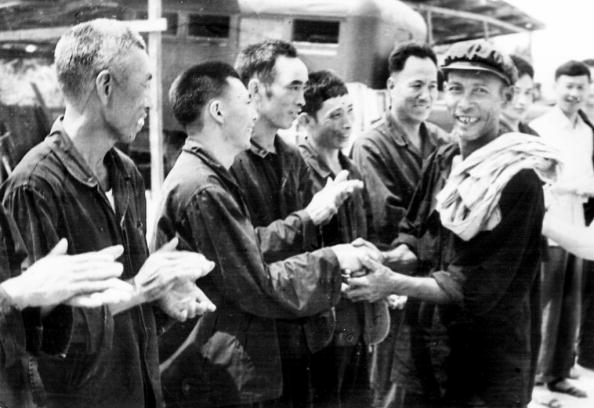
Mok also hated Vietnam with a passion. In the only known interview with Mok, conducted in 1997 by American journalist Nate Thayer, he defended the murder of another zone leader and his thousands of followers on the grounds that they were secretly Vietnamese. "I have never taken a nap in my life, in order to go faster than the Vietnamese, to beat the Vietnamese, to not allow the Vietnamese to attack us," he said.
After the regime fell and a new Vietnam-backed government was established in 1979, Mok fled north to the Thai border and led guerilla warfare in Anlong Veng, then a thicket of jungle at the base of a mountain range. Now, a roundabout marks the town’s center at the junction of two country roads, surrounded by cassava and rice fields that glowed green from rain when our team visited in July.
After Vietnamese troops exited Cambodia in 1989, Ta Mok assumed full political control over Anlong Veng. Even today, his fingerprints are all over the town. Up the street from the roundabout is the town bridge, constructed over the river where tuk-tuks and motorbikes stream toward the central market. Here, Mok oversaw construction of a damming system that feeds into an amoeba-shaped lake — a plentiful source of fish.
Nearby, the red-roofed hospital and local school were also built under his watch. His grave is marked with a giant glittering mausoleum, and a guesthouse bears his name.
Residents’ stories about Mok evoke a different leader: Kind, generous and hardworking. One woman remembered knocking on his door when she was heavily pregnant and walking away with fistfuls of cash. Another man said Mok liked to sit with his legs dangling over the riverbank as he directed soldiers in construction projects. Anyone passing by his compound hungry got rice, salt, fish or sugar, no questions asked.
“Everyone here in Anlong Veng thought of Ta Mok as a second father,” one former soldier told us. “He took very good care of them.”
Mok was finally arrested in 1999 and the district was reunited with the rest of Cambodia. When he died in 2006 — before he could be tried for war crimes — hundreds poured into the streets of Anlong Veng to mourn. “He was a direct person and did everything himself,” said another soldier’s son. “That’s why most people in Anlong Veng really love him.”

Out of the roughly 15,000 people held in the Tuol Sleng or S-21 prison in Phnom Penh — now home to the Tuol Sleng Genocide Museum — only about a dozen survived. Prisoners were electrocuted and waterboarded. They were tortured with metal rods and pliers. They had their fingernails and toenails ripped out and their wounds doused with acid.
Norn Chantha discovered Tuol Sleng for the first time in 12th grade. On a whim, he opened a history book a nonprofit had given his school. “I wasn’t really interested in reading the book because I thought that since I was a Khmer Rouge soldier’s kid, I’d already heard quite a lot about the Khmer Rouge story,” said Chantha, now 29, from the office of the Anlong Veng high school where he teaches English. The book was lined with photos of victims being maimed with long metal wires — the first inkling there might be more to the story than what he had been told.
“It shocked me,” he said.
Until 2011, the same year that Chantha graduated, Cambodia’s Ministry of Education avoided teaching Khmer Rouge history in schools, in part to skirt criticism from Prime Minister Hun Sen, who ordered that 12th grade social studies textbooks be withdrawn from classrooms in 2002 on the grounds that Khmer Rouge sections needed to be “rechecked.” After defecting from the Khmer Rouge, Hun Sen returned to Cambodia with the Vietnamese-installed government and has resisted a public reckoning with the regime during his 37 years as prime minister. He has even gone so far as to say that trying Khmer Rouge leaders would lead to civil war. For kids in school today, curricula about the regime are based on a short history volume produced by DC-Cam and vary greatly in their thoroughness.

Chip HIRES/Gamma-Rapho via Getty Images.

Mikhail Svetlov/Getty Images.
Many families have come to see their personal histories as the whole truth of what happened. In Anlong Veng, where people still live in villages known by their Khmer Rouge-era numeric military names, those histories are often inverted versions of what other Cambodians believe, with Khmer Rouge soldiers presented as protagonists instead of perpetrators. Until 12th grade, Chantha never thought twice about his parents being soldiers. “It was normal in Anlong Veng,” he said.
Now as an adult, a combination of internet searches and the school’s teaching materials have led Chantha to believe “the entire regime was horrible, because so many people were killed.” But his north star is still his mom’s stories — which tend to come back to the same refrain about why some people suffered while others were spared.
“She said in any places where the Vietnamese were secretly involved, the food and the living situation in that area would be difficult,” Chantha said. “If there were no Vietnamese masquerading as Khmer, people living in the area would live a normal life.”
One example goes like this: In 1977, his mother was helping to build a dam near the Vietnamese border. At a nearby Khmer Rouge hospital that she often passed by, patients were dying so often that it was considered a local mystery among soldiers. Once, when Chantha’s mother visited herself, she saw patients so thin “they didn’t even look human,” she told him.
The deaths were so frequent because the doctors were secretly Vietnamese, she said, and they were injecting Khmer patients with poison or water on purpose to make them sick. When Khmer Rouge leaders “discovered” the charade, they killed or disappeared the doctors for re-education, and the hospital was shut down.
“I think what my mother told me seemed reasonable,” Chantha said as he recounted the tale. “There were spies, and that’s why patients like soldiers and civilians were killed.”
Khmer Rouge hospitals were notoriously plagued by starvation and disease and lacking in basic care. Historian Stephen Heder, who worked on the Khmer Rouge Tribunal and is now a research associate at the University of London’s School of Oriental and African Studies, said that while it’s plausible that incompetent medics killed patients either inadvertently or on purpose in some instances, there is “zero evidence” of Vietnamese spies having been involved.
When we asked how Chantha squares his mom’s viewpoint with the facts he’s picked up elsewhere, he said he has decided not to view the regime as entirely good or entirely bad.
“If people weren’t lucky, and they lived in an area that wasn’t good, they experienced bad things,” he said. “For me personally, I can’t differentiate whether Ta Mok was a good or bad person because my parents’ experience was good compared to other people’s.”
But he’s certain of one thing: “If any unit had a Vietnamese spy, people would definitely be massacred.”
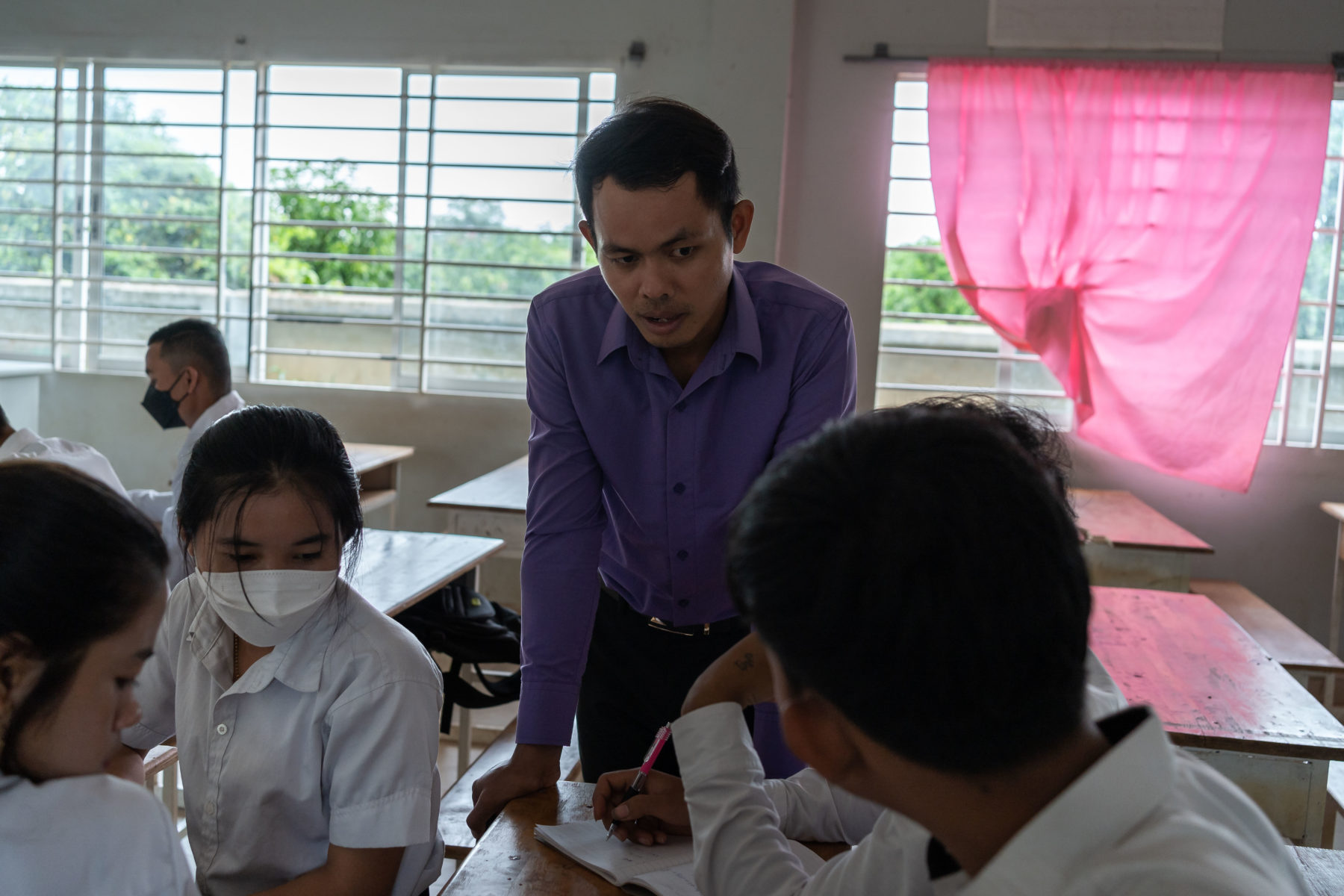
Chantha’s mother Mong Tim first met Ta Mok in 1993, when he invited a group of soldiers’ wives to his home. Cambodia had just hosted its first general elections under the United Nations, and the rest of the country was moving on from the Khmer Rouge — but Ta Mok was determined to keep control of the district.
As the women sat in a big circle around him, Ta Mok paced around the living room and drew up plans to protect Anlong Veng’s borders on a blackboard. He wore a simple cloth and addressed the women in a quiet voice. Afterward, the group ate a lunch of beef and pork together at long tables, sharing tips on how to raise chickens and cows.
In all, the women spent 10 days like this at Mok’s home, the daily blackboard sessions only interrupted for big meals prepared by a chef.
“He said if we didn’t do our best to protect our land, the Vietnamese would take our land and it would end in misery,” Mong Tim recalled. “What he told me inspired me to survive for my children’s future. I didn’t want to lose our land or have another government to govern us. If we lost the battle with the Vietnamese, they would abuse us.”
We spoke with Mong Tim, now 63, in the living room of her wooden home, where framed photos displayed her six adult children along the mantle and a talking bird screeched out Khmer greetings in the garden. The wives’ meeting sparked a yearslong friendship: Ta Mok regularly gifted her rice and seasonings and even taught her to sew.
In the early 1990s, Khmer Rouge soldiers flooding into Anlong Veng were pulled into his system, working together to raise farm animals and sharing goods amongst themselves. Many soldiers had lost their own parents or families. “Cambodians relocated from every part of the country. We learned to love each other like a family in order to help each other and to survive,” Tim said.
It was a big improvement from her life before. During the 1980s, when Vietnam occupied Cambodia, fighting dragged out in Anlong Veng, even though the Khmer Rouge movement was effectively dead. Tim moved daily between different parts of the jungle, and while she tried to seek refuge in Thailand, “people didn’t allow us to enter their village,” she said. Instead, she built a hut and lived there for a year, surviving off bitter roots. She lost all her hair.
Still, she doesn’t blame Ta Mok or other Khmer Rouge leaders for refusing to capitulate.
“I felt pain when thinking that the Vietnamese invaded us and abused us. I felt pain because we could not settle anywhere,” she said. “We kept running because the Vietnamese army kept chasing us. We ran all the time, and we ran while exhausted and starving. We slept mostly on the ground, anywhere we could.”
“I didn’t suffer with Ta Mok, but I did with the Vietnamese invasion,” Tim said.
In recent years, Tim has come across Facebook and YouTube videos that say Ta Mok murdered people in the country’s southwest, but that was before she knew him. Under his rule, she told us, people had rice and fish. The forest was protected. He even traded small bits of gold at the Thai border to bring back noodles and rice.
We asked if her feelings about him have changed at all since they first met, and she said no.

“He is what he is. Life goes on. In order to survive, we adapted to the new environment. We needed to think about the future."
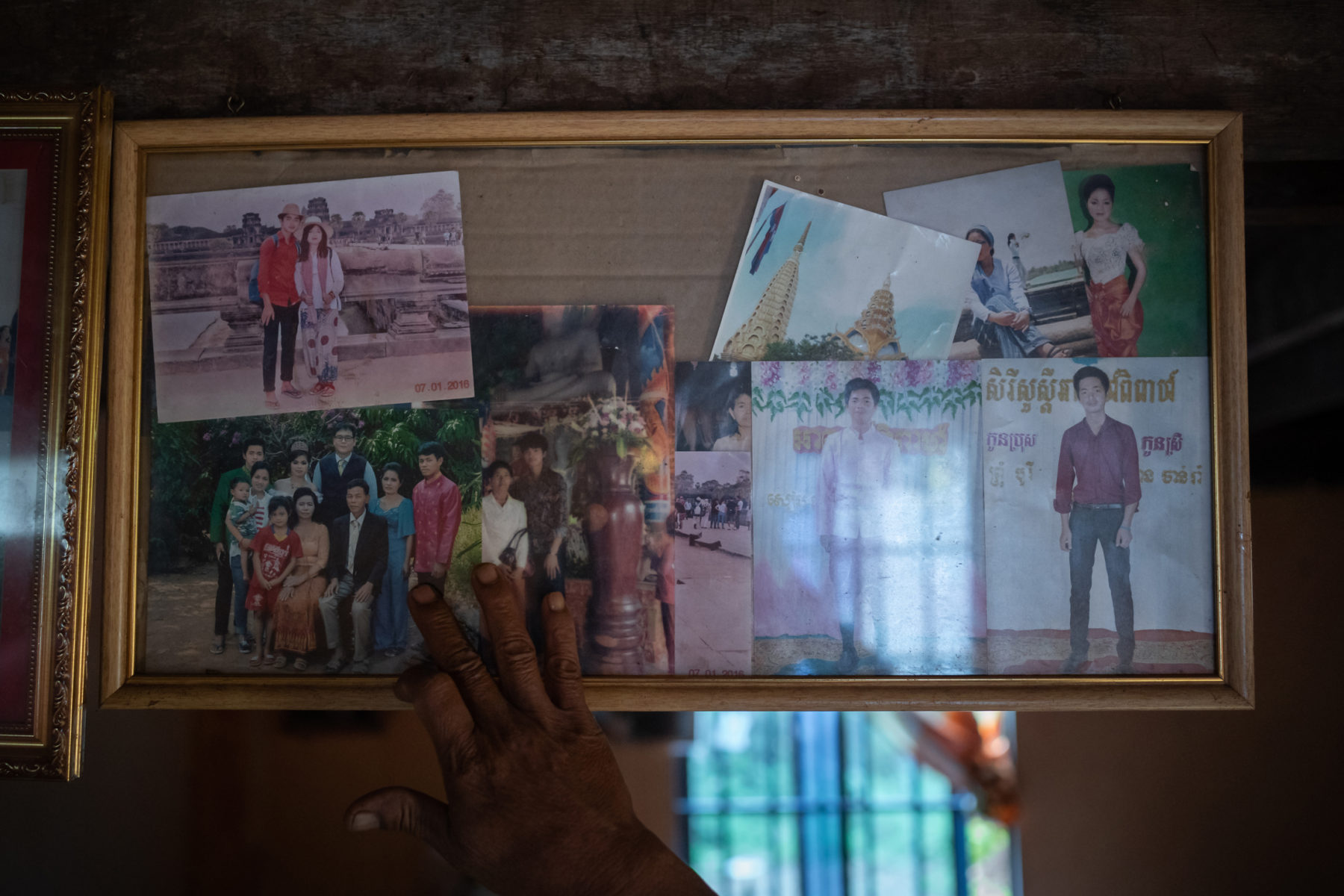
How Anlong Veng residents should grapple with the past has been a point of debate for years. Back in 2003, the government said it wanted to memorialize the district as a tourist destination, prompting local outcry and a slew of articles stereotyping it as the “Wild West” of Cambodia. Youk Chhang, director of the Documentation Center of Cambodia where Kheang works, rejected the plan on the grounds that it would commercialize memory.
Complicating matters was the Khmer Rouge Tribunal that sought to try war criminals through a joint Cambodian and international court. Although the tribunal was only meant to focus on high-level architects of the genocide — and struggled to even do that — it had a chilling effect in Anlong Veng. One researcher recalled villagers physically running from his white car during a visit, scared that a U.N. vehicle had arrived to take them away.
By 2015, the tribunal had stalled, and Youk established the program in Anlong Veng to teach kids about Khmer Rouge history. The sessions bring 15 kids from local high schools to a day-long workshop — led by Kheang — to explain the basic history of the regime and visit historical sites like Ta Mok’s compound and Pol Pot’s grave.
In a Zoom call, I told Youk about Chantha and his mother and asked how he saw the organization’s role in interpreting the older generation’s narratives for young people.
Youk himself straddles seemingly contradictory positions. As a child, he survived being tortured in a Khmer Rouge work camp and eventually fled to the United States. His extended family is from Ta Mok’s home province of Takeo and lost all but two relatives there. And yet to do his work effectively, he must defend the humanity of Anlong Veng to outsiders.
In 2011, researchers found that both soldiers and high schoolers in Anlong Veng tended to view themselves within a victim-hero mindset against the Vietnamese, bolstered by poverty, intergenerational trauma and isolation. All told, this led to “difficulty in observing the emergence of coherent narratives,” they wrote.
That lack of cohesion, along with omissions or outright lies, doesn’t matter, Youk told me, so long as people are talking in the first place. “I don’t expect one narrative,” he said. “The more complex the history, the more we learn.”
Historians themselves are not settled on much of what happened under the Khmer Rouge regime and the precise role Ta Mok played. While it is clear that he would have been found guilty of crimes against humanity and genocide, his reputation for having orchestrated huge massacres has been exaggerated over the years, Heder, the historian who worked on the Khmer Rouge Tribunal, said.
“What we know among us about what happened under this regime is not one thousandth of one percent of what we know about the Holocaust, maybe one percent of what we know about what happened in the Soviet Union, and a hundredth of one percent of what we know about China under Mao,” Heder said. “We’re all wandering around in the dark grabbing onto little beams of light trying to put together a coherent picture.”
Youk said his long-term goal isn’t to adjudicate specific beliefs or memories in Anlong Veng. Eventually, he’d like to see the district reconnect culturally with the rest of Cambodia — but first that means helping kids talk to their parents and grandparents about why they think what they do. “They have to reconcile within their own family first before they can reconcile with their neighbors, the community, outside,” he said.
Youk said he doesn’t expect that to happen right away, especially through a single workshop.
“In the beginning, I only expect them to learn the word genocide, that’s all,” he said. “If you can just say that, that’s fine.” But when kids grow up, “they have the responsibility to find their truth.”






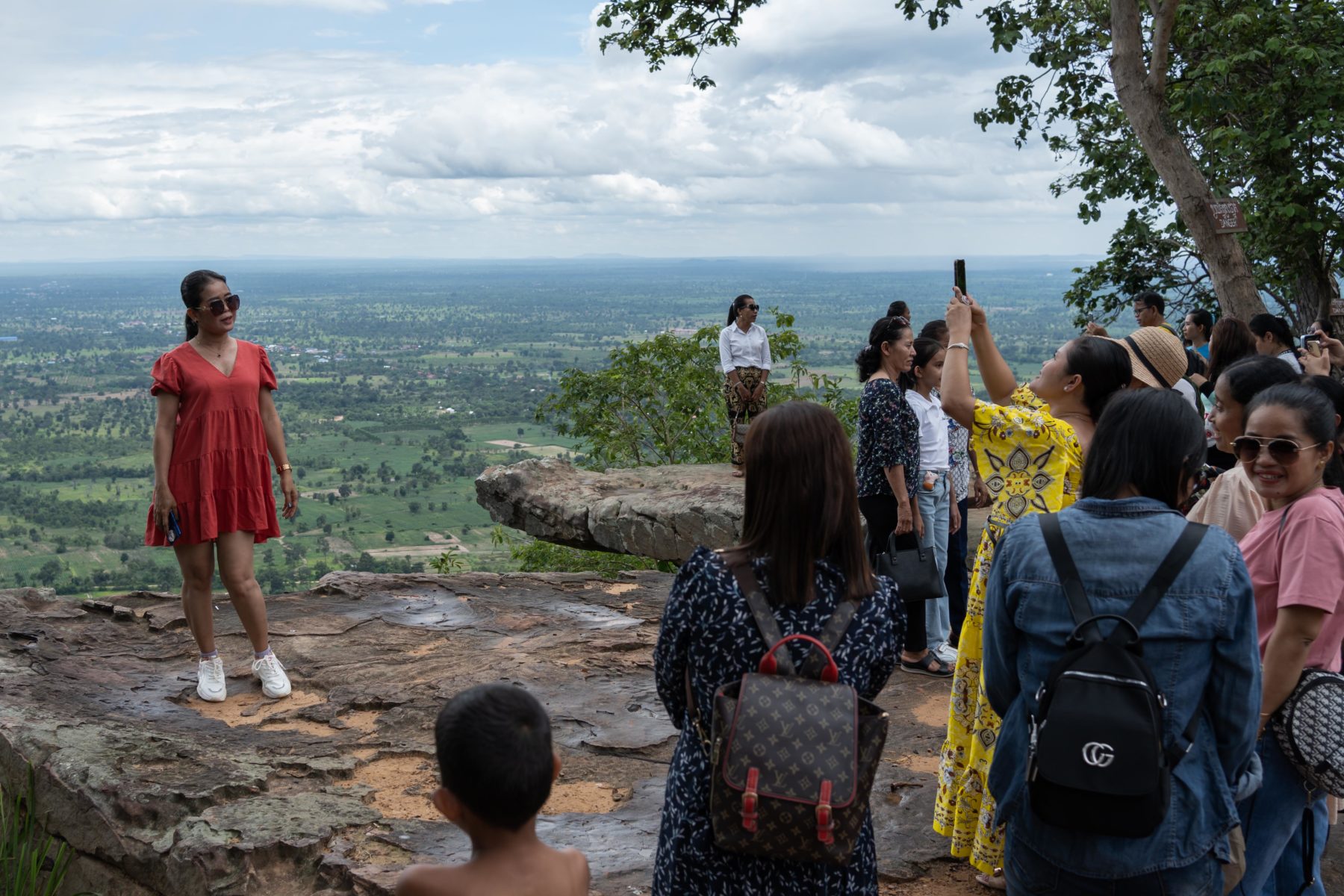


Not everyone in Anlong Veng is nostalgic for Ta Mok’s rule. An Horn, a slight, wiry cassava and rice farmer who we met outside his wooden home on a winding dirt road, quickly brushed aside the idea that the leader was anything special.
In fact, only the higher-level Khmer Rouge benefited from the food and unlimited handfuls of money that other residents had ascribed to Ta Mok. “I never dared to go near him,” Horn said with a shake of his head. “He was one of the top leaders and I was a low-ranking soldier. I wouldn’t go near him.”
Horn was around 10 years old when the Khmer Rouge swept into his rural province. Troops separated him from his parents and forced him into a camp with other kids, where he was trained as a child soldier. His first job was carrying older boys’ food and drink and then hauling soil to construct dams. “We didn’t have any freedom at all. They forced small kids to work as hard as elders,” he said.
As he became a teenager and started moving between provinces in a mobile unit, Horn’s life consisted of staying up for hours on night watch and stealing sleep on the ground “like an animal.” By 1980, he was sent to the mountain range above Anlong Veng, where soldiers had more clothing and food than he’d ever seen before. But the luxuries didn’t win him over.
“At that point, I just prayed that the war would end,” he said. “I was so scared I would die.”
Horn remains unimpressed with the things that people often point out as generous acts by the Khmer Rouge regime. Leaders built roads to connect Anlong Veng’s villages and the mountain to move their own supplies, not help residents, he said. And bridges and schools are simply what should be expected from any government. In his own village, “the majority of people prayed the war would end so we could live a normal life, reunite with our family, make a living.”
Subscribe to our Authoritarian Tech newsletter
From biometrics to surveillance — when people in power abuse technology, the rest of us suffer. Written by Ellery Biddle.
If that was the case, we asked, why did some people in the district remain so loyal to Ta Mok? “You supported [the] group to which you belonged,” Horn said. “If you were under the shade of a tree, you admired that tree.”
Sorpong Peou, a political science professor at Toronto Metropolitan University who likewise survived the Khmer Rouge, calls this mentality the “politics of survival” that still plagues Cambodia today. Opposition leaders, frustrated with Hun Sen’s longtime authoritarian rule, have continued to trot out anti-Vietnamese racism, using the slur yuon and accusing the prime minister of being a Vietnamese puppet.
“Cambodian politics is very deeply personalized, not institutionalized. Everything is personal,” Peou said. “The court is Hun Sen’s court, the armies are Hun Sen’s armies. Everything is personal, and because of that, personal attacks are the norm, demonizing your opponent is the norm.”
But it’s also “self-defeating,” he said. “You destroy your country by not being able to move toward reconciliation.”
As the house across the street from Horn’s kicked off an evening karaoke session, we realized it was too late to call a motorbike back to town. Horn said he couldn’t ask his neighbors for a ride because people in the village still don’t trust each other after dark.
We made small talk while waiting for another pickup. Had Horn visited any of the local sites the memory organization was fitting with plaques and guides, like Ta Mok’s old compound? Horn said he hadn’t. He wants kids to know what happened, but the places from the past don’t interest him.

By the end of the Ly Sok Kheang’s workshop, the high schoolers were getting antsy. We had watched them sit through Kheang’s morning talk, a movie and history tour on the mountainside, plus a break to take selfies on the cliff overlooking Anlong Veng’s lush farmland.
Now we stood in a small muddy clearing, where under a mound of dirt, protected by a rusting roof and a sagging wire fence, lay Pol Pot’s remains.
It was an unassuming resting place compared to Ta Mok’s towering shrine. Across the street, a casino with a busted-out window and a graying facade loomed over the mountaintop. As the kids stood around the grave, an elderly woman who works as its unofficial cleaner tottered up the path and started talking. She joined the Khmer Rouge, she told them, because she “believed that it was a good thing to do.”
“If you all persist both mentally and physically to do something like I did in the past — if the next generation persists in expanding and protecting our land from the neighboring countries — I believe we will have a sustainable country,” she said, a hand resting on the wire fence. “If we’re all weak, the neighboring countries will interfere, and we will lose our land bit by bit until it is all gone.”
The kids tossed out questions: How long have you looked after the grave? “Twenty years.” Do people celebrate here? “Sometimes.” As is their custom, the workshop leaders didn’t try to intervene, letting the kids take in as much or as little as they wanted: Kheang, who had swapped his button-down for a T-shirt during the mountainside excursion, said that the cleaner always makes an appearance during visits. “Kids can feel the narrative themselves,” he told me later.
We rode down the mountain to our final destination, Ta Mok’s compound. Overlooking the lake dotted with lilypads, we sat near the storerooms where the Khmer Rouge had once squirreled away records and artifacts, talking to the 17-year-old Phal Rampha as the other kids crowded around.
His grandpa sells palm cakes to make a living, but before that, he was a bodyguard to one of Ta Mok’s right-hand men. Sometimes, a bite of palm cake reminds him of a specific story: Once, Rampha said, his grandpa dodged a bullet that bent the tree behind him all the way back.
“Before, I thought that the Khmer Rouge regime was rescuing the nation from war,” he told us. “From today’s session I learned that there was torture, which made me sad. It seemed atrocious.”
Rampha said that didn’t think his grandpa would have lied about Ta Mok being a kind person who gave people everything he had to help them. His eyebrows knitted together as he spoke.
“I think he couldn’t have been the one who did all of those brutal things to people,” Rampha said. “I believe there were spies in the government.” But it also seemed clear that Ta Mok and other Khmer Rouge leaders had caused internal fighting and divided people into groups.
“I want to know more,” he said. “How cruel was it? Where were the mass graves?”
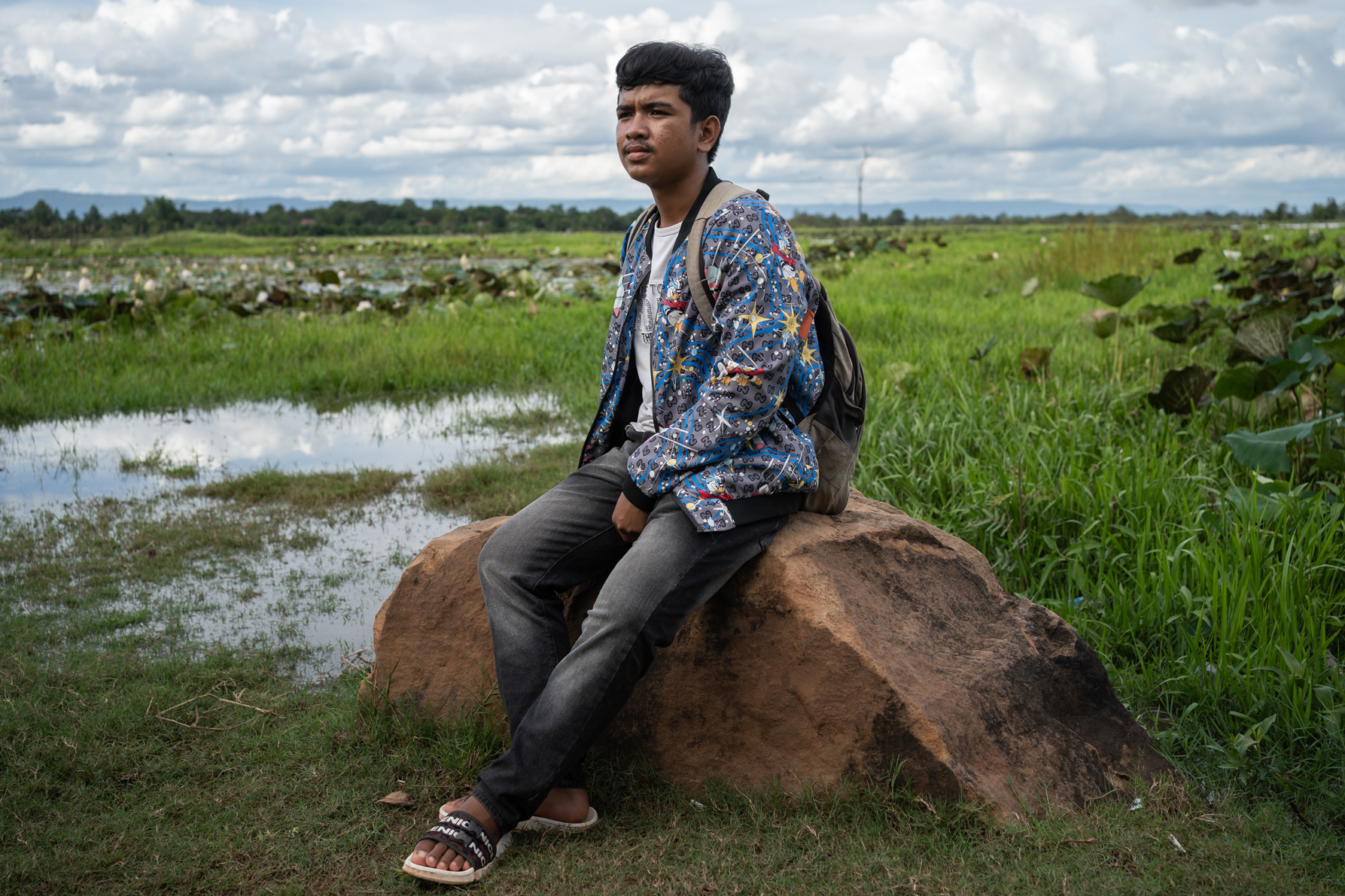
I asked if he had specific questions for his grandpa. Not yet, he said. “But I want to tell my grandpa that the Khmer Rouge regime was more horrible than what he told me,” Rampha said.
How would he feel bringing that up?
“Hean,” Rampha said, using the Khmer word meaning “brave enough.” “Hean. Hean.”
The story you just read is a small piece of a complex and an ever-changing storyline that Coda covers relentlessly and with singular focus. But we can’t do it without your help. Show your support for journalism that stays on the story by becoming a member today. Coda Story is a 501(c)3 U.S. non-profit. Your contribution to Coda Story is tax deductible.
